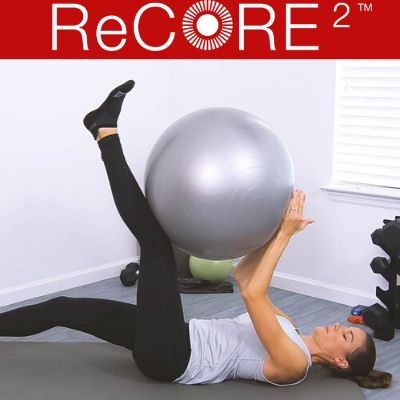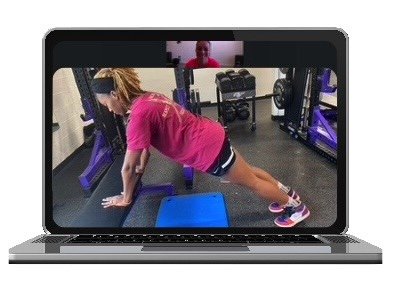How do pregnant women move differently?
Throughout the course of pregnancy, it becomes increasingly obvious that pregnant women move differently than they used to. Obvious changes such as increased body weight, swollen feet, and a growing baby bump make movement difficult and sometimes downright awkward. Beyond these noticeable changes, however, there are distinct musculoskeletal and biomechanical changes that affect the way pregnant and postpartum women move and exercise.
Here is what the research tells us:
Pregnant women experience an increase in the hormone relaxin (Carpes et al. 2008). This causes an increase in joint mobility which can cause increased anterior (or forward) tilting of the pelvis (Forczek 2018; Foti et al. 2000; Provenzano et al. 2019) as well as an increase in the lumbar curvature of the spine (Forczek 2018). The relaxin hormone remains in the bloodstream for several months after childbirth, even longer if a woman is breastfeeding.
Many of the movement patterns seen in pregnancy can be attributed to increased body mass, a forward shift of the center of mass (due to baby bump), and interestingly enough, an innate desire to increase safety and stability while moving (Edwards 2020).
Pregnant women typically demonstrate:
- Widened stance width (Bird 1999, Foti et al. 2000, Provenzano et al. 2019). This is due to a widening of the hips, as well as an increase in body weight. A wider base of support will increase gait stability.
- Decreased walking speed (Forczek 2018, Provenzano et al. 2019)
- Decreased stride length- meaning shorter steps (Forczek 2018, Provenzano et al. 2019)
- Decreased cadence (Forczek 2018)
- Increased double support time (Forczek 2018, Provenzano et al. 2019)- meaning more time with both feet on the ground while walking, which also increases stability.
- Increased ground time (Forczek 2018, Provenzano et al. 2019), and an associated decrease in peak force (Forczek 2018).
- A shift of plantar load from rearfoot to mid/forefoot (Forczek 2018), which may help to increase stability.
Pregnant women also exhibit increased muscle activity in the hip extensor (gluteus maximus and hamstrings), hip abductor (glutei muscles) and ankle plantar flexor muscles (calf muscles) (Foti et al. 2000). These changes are likely to compensate for increased body weight, changes in weight distribution, and changes in joint movement. This could easily lead to overuse injuries in these muscles causing pain, cramping or soreness (Foti et al. 2000).
Pregnant women also experience stretching of the abdominal muscles and linea alba, which affects core stability and strength. When the linea alba stretches it is called Diastasis Recti, and research has found that up to 100% of women will experience this by week 35 of pregnancy (Fernandes et al. 2015).
These movement pattern changes do not go away automatically after child birth! Postpartum women demonstrate many of the same characteristics listed above, with these changes sticking around from 6 months up to a year (Carpes et al. 2008, Forczek 2018, Provenzano et al. 2019)!
Postpartum women still exhibit joint laxity due to altered hormone levels. This hypermobility can lead to changes such as: lumbar lordosis, flattening of the rib cage, thoracic kyphosis, anterior pelvic rotation, and even flattening of feet (Edwards 2020). To compensate for this laxity and to improve gait stability, postpartum runners often show restricted trunk and pelvis rotation (Provenzano et al. 2019). Tight muscles may also compensate for laxity while also restricting motion in other places (Edwards 2020). Tightness is often seen in the hip flexors, lumbar extensors, IT band, and hamstrings (Christopher et al. 2020).
THE TAKEAWAY? These changes should not scare or dissuade you from running or exercising during or after pregnancy! The ACOG (American College of Obstetricians and Gynecologists) strongly recommend physical activity during pregnancy, stating it to be both safe and desirable (ACOG Committee Opinion). However, it is important to understand what is happening in the body, and how to adapt to these issues in order to minimize discomfort, excessive soreness and possible issues such as pelvic girdle pain, pelvic floor dysfunction, sciatic pain etc..
It is essential to focus on strength work both during pregnancy and postpartum in order to allow the body to better handle these changing physical demands! It may also be helpful to re-evaluate exercise training (intensity, frequency and type) in order to lessen the stress placed on joints, muscles, and the growing baby during this time of altered movement. Wearing a belly support in the 2nd and 3rd trimester can help to support the weight of the baby when abdominal muscles are weakened and stretched. A support belt can also improve posture stability by shifting a pregnant woman’s center of mass to a more posterior position (Bey et al. 2018).
For more information on the ReCORE strength programs/training or the FITsplint Maternity and Post-natal support belt, see info here.
References:
ACOG Committee Opinion. “Physical Activity and Exercise During Pregnancy and the Postpartum Period.” Obstetrics & Gynecology 135, no. 4 (April 2020).
Bey ME, Arampatzis A, Legerlotz K. The effect of a maternity support belt on static stability and posture in pregnant and non-pregnant women. J Biomech. 2018 Jun 25;75:123-128.
Bird, Ar, Hb Menz, and Cc Hyde. “The Effect of Pregnancy on Footprint Parameters. A Prospective Investigation.” Journal of the American Podiatric Medical Association 89, no. 8 (August 1, 1999): 405–9.
Carpes, F P, D Griebeler, J F Kleinpaul, L Mann, and C B Mota. “Women Able-Bodied Gait Kinematics During and Post Pregnancy Period,” 2008, 8.
Christopher, Shefali M., Alessandra N. Garcia, Suzanne J. Snodgrass, and Chad Cook. “Common Musculoskeletal Impairments in Postpartum Runners: An International Delphi Study.” Archives of Physiotherapy 10, no. 1 (December 2020): 19.
Edwards, Kate Mihevc. “Considerations for the Postpartum Runner.” Strength & Conditioning Journal 42, no. 1 (February 2020): 45–52.
Fernandes da Mota PG, Pascoal AG, Carita AI, Bø K. Prevalence and risk factors of diastasis recti abdominis from late pregnancy to 6 months postpartum, and relationship with lumbo-pelvic pain. Man Ther. 2015 Feb;20(1):200-5.
Forczek, Wanda, Yury P. Ivanenko, Joanna Bielatowicz, and Karolina Wacławik. “Gait Assessment of the Expectant Mothers – Systematic Review.” Gait & Posture 62 (May 2018): 7–19.
Foti, Theresa, Jon R. Davids, and Anita Bagley. “A Biomechanical Analysis of Gait During Pregnancy*:” The Journal of Bone and Joint Surgery-American Volume 82, no. 5 (May 2000): 625–32.
Provenzano, Seraphina G., Jocelyn F. Hafer, Jillian Peacock, Samantha Kempner, Jessica Deneweth Zendler, and Cristine E. Agresta. “Restriction in Pelvis and Trunk Motion in Postpartum Runners Compared With Pre-Pregnancy.” Journal of Women’s Health Physical Therapy 43, no. 3 (July 2019): 119–26.





















Aubree McLeod is an ACSM-EP exercise physiologist, researcher in running biomechanics. She has also completed the ICE Preg & PostPartum Course for athletes. She has an M.S. in Exercise Science and has worked in a variety of spaces within the exercise science field including physical therapy, education, research, and run coaching for... Read More